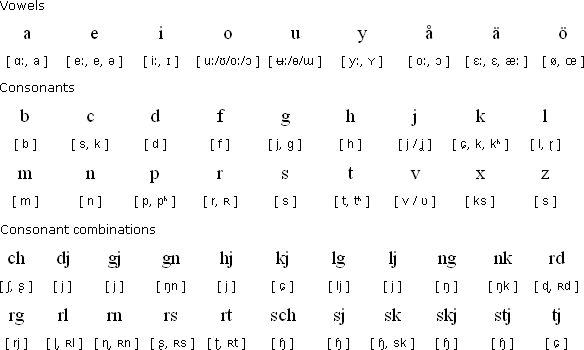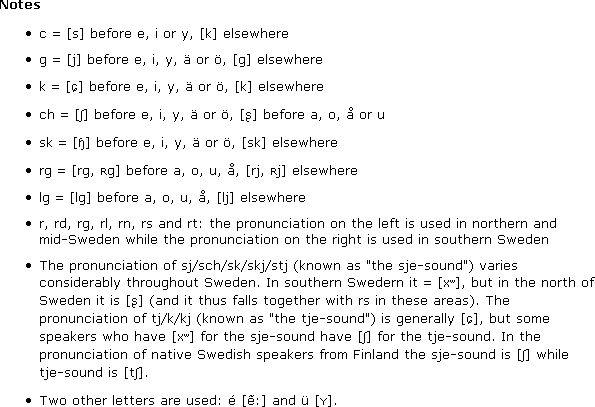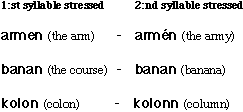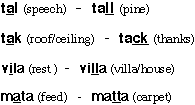|
阅读:383回复:11
打算把欧洲语言都学1遍
顺序:北欧,西欧,南欧,东欧。差不多也是从简单到困难的顺序。
入门:先用duolinguo学习一遍。 升级:找套教材依次学习a1,a2,b1,b2,c1,c2。争取至少学到c1。 时间:每天学习1-2小时。争取1-2年能学到c1。 目标:能看懂原著小说。 |
|
|
沙发#
发布于:2024-10-09 14:45
今天开始,学习瑞典语。
|
|
|
5#
发布于:2024-10-10 13:37
|
|
|
6#
发布于:2024-10-10 23:31
瑞典语字母与读音  注释(特殊发音)  |
|
|
7#
发布于:2024-10-10 23:59
ɑː - bra /brɑː/ a - natt /natː/
eː - hel /heːl/ ɛ - äpple /ɛplɛ/ ɛː - träd /trɛːd/ æː - ära /æːra/ æ - verk /værk/,värk /værk/ iː - Kina /ɕiːna/ ɪ - timme /tɪmɛ/ oː - mål /moːl/ ɔ - moll /mɔl/ øː - nöt /nøːt/ œ - nött /nœt/ œː - öra /œːra/ ʉː - ful /fʉːl/ ɵ - full /fɵl/ uː - fot /fuːt/ ʊ - bott /bʊt/ yː - syl /syːl/ ʏ - syll /sʏl/ b - bok /buːk/ d - dag /dɑːg/ g - god /guːd/ p - penna /pɛna/ t - timme /tɪmɛ/ k - kaka /kɑːka/ f - finne /fɪnɛ/ v - svenska /svɛnska/ s - språk /sproːk/ h - hot /huːt/ j - jag /jɑː/ r - rosa /roːsa/ l - allt /alt/ m - mod /muːd/ n - nej /nɛj/ ŋ - lång /lɔŋ/ ɕ - tjena /ɕeːna/ ɧ - sju /ɧʉː/ ɖ - nord /nuːɖ/ ɭ - kärl /ɕæːɭ/ ɳ - barn /bɑːɳ/ ʂ - torsdag /tuːʂdɑːɡ/ ʈ - kort /kɔʈ/ |
|
|
8#
发布于:2024-10-12 19:45
|
|
|
9#
发布于:2024-10-15 22:59
http://www.bossethoren.se/prosodi_eng.html
SWEDISH PROSODY
|
|||||||
|
10#
发布于:2024-11-13 11:56
个人体感,建议楼主学习罗曼语族语言时,从西班牙语开始会比从法语入门更好一些,所以顺序不如调成:“北->南->西->东”,或者“北日耳曼->罗曼->西日耳曼->斯拉夫”
|
|
|
11#
发布于:2024-11-13 13:47
Disillusion:个人体感,建议楼主学习罗曼语族语言时,从西班牙语开始会比从法语入门更好一些,所以顺序不如调成:“北->南->西->东”,或者“北日耳曼->罗曼->西日耳曼->斯拉夫”回到原帖西班牙语和法语,我早就学过了。所以其实标题准确说应该是把没学过的都学一遍 |
|




 By giving stress to different words in a
By giving stress to different words in a Perceived lengths do not always coincide with actual duration.
Perceived lengths do not always coincide with actual duration. Please note that stress placement and
Please note that stress placement and